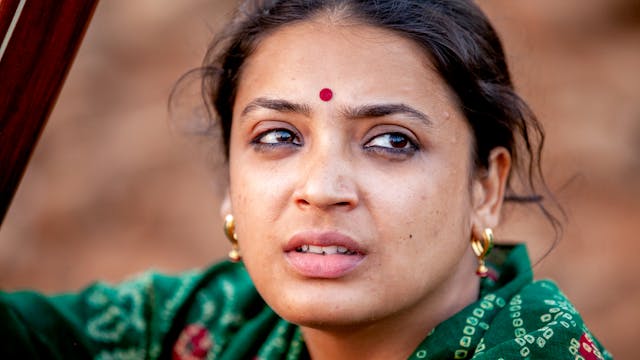Arshad Khan | Bhairavi
Sounds of India
•
3m 36s
Filmed and recorded live in 2017, at Mulshi, Maharashtra, India.
Musician:
- Arshad Khan (esraj)
Alap in Raag Bhairavi, Thaat: Bhairavi, Samay: Morning
The esraj is a variant of the dilruba with 20 metal frets on a sitar-like neck. With a slightly deeper tone than that of a sarangi, this rare bowed instrument can imitate vocal music beautifully. This short recital in Raag Bhairavi by Arshad Khan was shot in the breathtaking location of Mulshi, Maharashtra.
Bhairavi’s multi-faceted emotions make it a potent raga. The depth and mysteries of its personality are myriad which unfurl only with cautious, immersive handling. So vast is the emotional canvas of Bhairavi that it reveals a different facet of its personality in the hands of different musicians.
In this video, Khan plumbs its melancholia in a slow, languid alap (introduction without rhythm). He creates a melange of doleful strains with his heartfelt approach coupled with the heart-wrenching sound of the esraj. The larger-than-life, pathos-filled melody overflows to blend with the stunning, barren landscape he is surrounded with, creating an atmosphere that is surreal, haunting and forbiddingly grasping.
Arshad Khan is one of the few exponents of the dwindling legacy of esraj, an instrument that is originally of Afghan germ. The esraj accompanies ‘Gurmat Kirtan’, a form of devotional song of the Sikh Namdhari sect in India. About a 100 years ago, it made it to the eastern part of India and established firm roots in Bengal where, after hearing its plaintive tones, the great Bengali poet Rabindranath Tagore made it compulsory for all students of the Visva Bharati University (established in 1921) to learn the instrument.
Raag Bhairavi is derived from the Bhairavi Thaat. It is a sampurna raga but stands out from all other sampurna ragas because of its use of all twelve swaras or notes. The soul of Raag Bhairavi is likened to one of the eight goddesses born in the burial grounds, according to the Hindu pantheon. It is intense, versatile and is magically capable to portraying a wide spectrum of emotions based on its handling. Its vadi swar or dominant note is Ma and samvadi swar or sub-dominant note is Sa. Its arohana and avarohana are as follows:
S r g M P D n S’
S’ n D P M g r S
Its driving phrase in the poorvanga is: S n’ S r g M [g] r S. The bracket signifies a shake of the swara.
The uttaranga is launched with the phrase: g M d n S’
Up Next in Sounds of India
-
Ramakant Gaikwad | Raag Madhuvanti
Recorded on location in Mulshi, Maharashtra, India
Musician:
- Ramakant Gaikwad (Patiala gharana)Raag Madhuvanti; Thaat: Todi; Samay: Late Afternoon
Raag Madhuvanti is a creation of the sitar legend, Ustad Vilayat Khan. Comprised of the softer shades of Multani, an afternoon melody, this rag...
-
Pelva Naik | Raag Maru
Recorded on location in Mulshi, Maharashtra, India, in 2015.
Musician:
- Pelva Naik (vocal)Raag Maru
Set against the sunset over Lake Mulshi in Maharashtra, Pelva Naik sings Raag Maru which is considered as a Raāgputra of Malkauns but opinions differ among scholars. It's not sung much being t...
-
Debasmita Bhattacharya | Ahir Bhairav
Recorded at Ravenna, Italy in 2017
Musician:
- Debasmita Bhattacharya (sarod)Raag Ahir Bhairav, Thaat: Bhairav, Samay: Early Morning
Debasmita Bhattacharya is one of India’s finest young sarod players. She balances a deep knowledge of classical forms with an expansive mindset, pushing the Hin...



